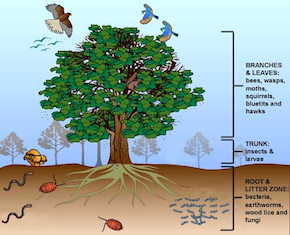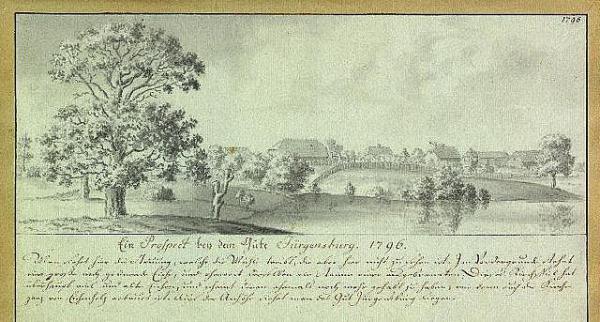 Die Stieleiche or Deutsche Eiche (german), Pedunculate Oak or English oak (english) - Quercus robur is a large deciduous tree 25-35 m tall (exceptionally to 50 m), with lobed and nearly sessile (very short-stalked) leaves 7-14 cm long. Flowering takes place in mid spring, and their fruit, called acorns, ripen by the following autumn. The acorns are 2-2.5 cm long, pedunculate (having a peduncle or acorn-stalk, 3-7 cm long) with one to four acorns on each peduncle.
Die Stieleiche or Deutsche Eiche (german), Pedunculate Oak or English oak (english) - Quercus robur is a large deciduous tree 25-35 m tall (exceptionally to 50 m), with lobed and nearly sessile (very short-stalked) leaves 7-14 cm long. Flowering takes place in mid spring, and their fruit, called acorns, ripen by the following autumn. The acorns are 2-2.5 cm long, pedunculate (having a peduncle or acorn-stalk, 3-7 cm long) with one to four acorns on each peduncle.
It is a long-lived tree, with a large widespreading crown of rugged branches. While it may naturally live to an age of a few centuries, many of the oldest trees are pollarded or coppiced, both pruning techniques that extend the tree's potential lifespan, if not its health. A specimen of notable longevity is one in Stelmuže, Lithuania which is believed to be approximately 1,500 years old, possibly making it the oldest oak in Europe; another specimen, called the 'Kongeegen' ('Kings Oak'), estimated to be about 1,200 years old, grows in Jaegerspris, Denmark.
Within its native range Q. robur is valued for its importance to insects and other wildlife. Numerous insects live on the leaves, buds, and in the acorns. The acorns form a valuable food resource for several small mammals and some birds, notably Eurasian Jays Garrulus glandarius. Jays were overwhelmingly the primary propagators of oaks before humans began planting them commercially, because of their habit of taking acorns from the umbra of its parent tree and burying it undamaged elsewhere. Mammals, notably squirrels who tend to hoard acorns and other nuts most often leave them too abused to grow in the action of moving or storing them.
Find out more about Quercus robur in Wikipedia article.
Zaube oak is one of the oldest oak trees in Latvia. The circumference of the tree is 8.10 m, the crown spread is 70 m², vertical height reaches 16 m. It is estimated to be over 300 years old. Most probably it is the same oak J. C. Broce depicted in his 1796 drawing of Zaube.
While in Zaube one should visit Zaube lutheran church (built 1845) which has very unusual bell tower. Also there are somewhat hard to notice ruins of medieval castle, built by Livonian order of knights in 1257 and razed in 1559 during Livonan war by invading russian army. Not far from the castle ruins one can observe remaining 19th century Zaube manor buildings in various states of disrepair. If the weather is warm enough one can go for a swim in Lejas ezers lake right next to the great old oak.
Find out more about history of Zaube in (latvian language) Wikipedia article.

Ein Prospect bey dem Gute Jürgensburg. 1796
Johann Christoph Brotze, "Sammlung verschiedner Liefländischer Monumente ..."
The cache is hidden almost exactly at the spot from where Broce was drawing his scenic view of Jürgensburg more than 200 years ago. Observe the changes and contemplate the unstoppable flow of time. What remains and what has been washed away?
Update 21.09.2014.
Many thanks go to Bosiks for replacing the lost cache. Coordinates and hint are the same as before. The new cache container is a bit smaller than the old one though.